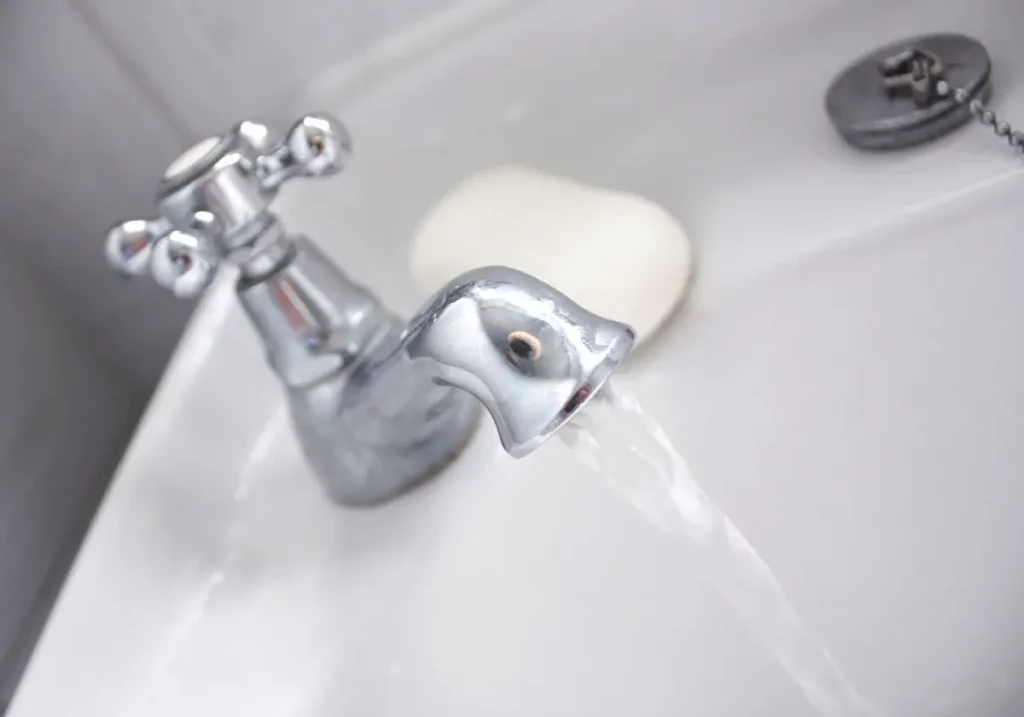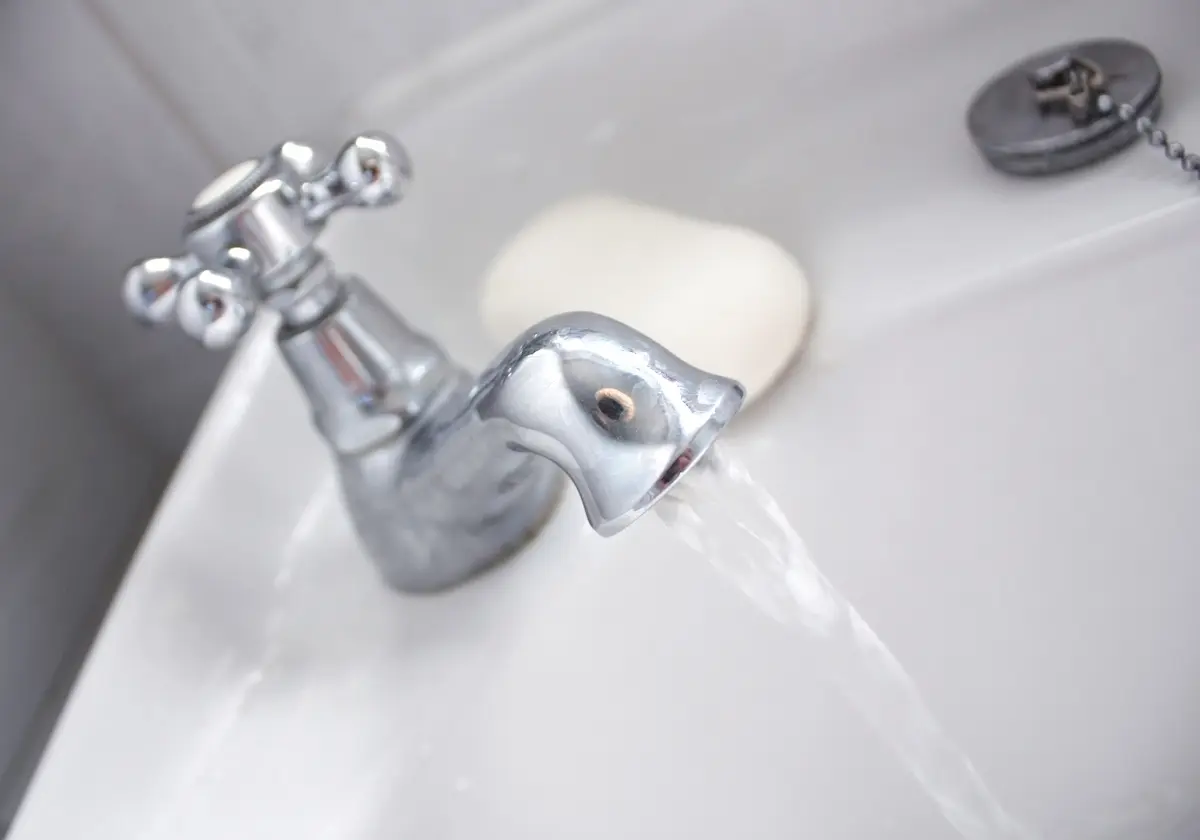In the United States, the average water usage in a family of two adds up to about 203 gallons of water per day. This means a two-person family will use approximately 6090 gallons of water per month. Total water usage is calculated by adding water usage from the tap, toilet, dishwasher, showers, etc.
Fortunately, when most of us want clean, fresh water, all we have to do is turn on a tap! However, no place is immune from drought, so it is crucial that you are mindful of and conservative with your water usage at home, no matter where you live.
Knowing how much water you use in your household is almost as important as buying groceries every month! Stay tuned to learn how your home uses water, how it all adds up, and what you can do to improve your water usage; therefore; lowering the bills!

Related Reading: What Is Family Tendency? [MEANING EXPLAINED]
American Two-Person Household Water Usage
Recent studies about how most Americans use water throughout their homes have shown that most of the time, indoor water usage is highest in the bathroom and second highest in the laundry room.
The average person uses roughly 101.5 gallons of water each day. It might sound difficult to believe that a two-person family could use 3,045 gallons every month! Here’s how:
- A full tub adds up to 36 gallons
- Each time you flush the toilet, you use 3 gallons of water. The average person flushes the toilet 6-8 times per day, coming to 18-25 gallons of water.
- 10-minute showers take 2 gallons a minute, adding up to 20 gallons.
- A washing machine utilizes 15 gallons for one load.
- Although usage varies by dishwasher, an average one uses between 4 and 10 gallons for each wash-cycle.
- Hygiene, such as brushing your teeth and rinsing your face, adds 2.5 gallons.
- Eight glasses of water add up to 1 gallon.
Saving Water in Your Household
Surprisingly, leaks are a common culprit behind high water usage in most households. Leaks can amount to 18 gallons of water per household per day due to leaky faucets, toilets, and other appliances.
Luckily, saving water in your household is now easier than ever before!
By switching to water-saving fixtures and appliances, you can reduce your indoor water use by up to twenty percent. New and improved bathroom appliances such as toilets, faucets, and showerheads are specially designed to be much more water-efficient than older models.
Making use of appliances like this could be more expensive upon initial purchase, but it will save you hundreds of gallons per month, lowering your water expenses. For example, less modern toilets will use between six and eight gallons to reach flush, whereas toilets known as low-flow toilets, which is any toilet manufactured after 1994, will use 1.6 gallons (or less!) for each flush.
In addition to this, older showerheads will flow well over the federal limit, which is 2.5 gallons each minute, while low-flow showerheads cannot flow higher than two gallons per minute. Some showerhead fixtures, like those with multiple nozzles, will exceed the federal limit, so these fixtures require you to shower faster in order to save on your water use.
When it comes to our modern washing machines and dishwashers, these newer models use water much more efficiently than these older models. Water-efficient dishwashers and washing machines will save you more than 5,000 gallons of water per year compared to washing dishes by hand. Newer washing machine models are also able to handle much larger loads of clothing with much less water.
It would also be good to take note that heating and cooling are water hogs! As you might already know, it takes a lot of water to make electricity, and water heating can become a huge energy user. Those hot, long showers might feel good during the cold winter months, but they waste both energy and water. Although we mentioned that modern appliances and fixtures are an efficient way of saving water, it is still important to turn off the tap when not in use.
By doing a bit of research, energy- and water-saving appliances and products can be readily purchased to enhance their performance, helping you save on your water bill. Another benefit of buying these products would be saving water for future generations. If new appliances don’t fit into your budget, you can still achieve substantial water savings just by checking for leaks and fixing them.
How To Check for Leaks in Your House
You might think it’s challenging to check for leaks, but don’t call a plumber just yet. You can quickly check your house for leaks by simply taking some time and effort. There are always things to check.
Let’s take a look at all the things you can check, and you will most likely find at least one leak at one or more of these places:
- Look both indoors and outdoors for leaks.
- Listen closely for running backwash water around water treatment devices, such as RO systems and softeners.
- If you have an in-ground sprinkler system, check that your irrigation timer has been set correctly and at the correct times. Your irrigation times should ideally be set before sunrise or after sunset.
- Don’t forget to test your toilet for trickling sounds, water moving in the bowl, and leaks below.
- If you have a pool, check it for leaks. This is especially important if you have an automatic pool refiller.
Five Clever Ways to Reduce Water Usage in Your Household
There are many ways you can save water besides checking for leaks. You can change the small things. Let’s take a more in-depth look at these five easy things you can do to reduce your water consumption:
Turning Off Your Taps While You Use Them
Never let your water consumption run out of your control. You can save 1.5 gallons of water per minute by turning off your tap while you are still brushing your teeth.
Shower With Less Water
Every minute you spend in your shower, you throw up to 4.5 gallons of water down the drain, literally. You can set a timer on your mobile phone to keep your showers shorter and more water-efficient. Alternatively, turn the water on while you are getting your hair or body wet and turn it off while you soap or lather your shampoo.
You can try to switch to a water-efficient showerhead that will allow you to lather up in less water, which means you will be saving on your water consumption and your bills as well.
Save Your Dirty Clothes
Washing a full machine load of clothes will use less energy and water than throwing in two half loads. This will mean lower energy and water bills, so save your laundry for a full load.
Reduce Your Food Waste Wherever You Can
Did you know it takes a lot of water to produce fruit, cereal, and most of your other food as well? Much more than half of the 7 million tons of drink and food thrown away every year in the US could have been eaten?
By wasting less food in your household, you can save up to $540 each year on groceries, while being more environmentally friendly. Freezing portions of food to eat later, buying canned or frozen fruit and vegetables, and repurposing leftovers for a second meal are all great ways to prevent food waste.
Time Your Garden’s Water Usage
It is advised to water your outdoor garden plants at the end of the day or during the early mornings, especially in the summer months. This will stop the water from immediately evaporating in the heat and sunlight.
Be sure to water the soil in such a way that the water goes straight to the roots of your plants, which is where they need it most.
If you live in an area prone to heatwaves, you need to think about the animals too. Instead of watering your grass, leave a container or dish filled with water for birds to wash in and drink from. Thirsty bees and other insects important to the environment will need a shallow dish or saucer filled with water and stones.
Speak To Your Water Provider
Another valuable tip is to see if your water provider offers their clients a water calculator. They will ask you to enter all vital information about your household, and they will give you an approximate estimate of how much water you should be using during the other months of the year. This will help you to see where you will typically waste water and how you can work to fix it.
Conclusion
Now that you are aware of how a two-person household’s water usage work, you can try your best to make some cuts where it is essential. Reducing water usage is crucial to being a good citizen and preserving water sources for many generations.

